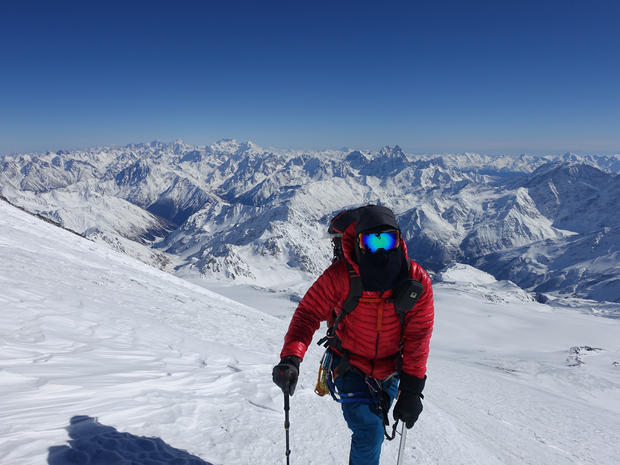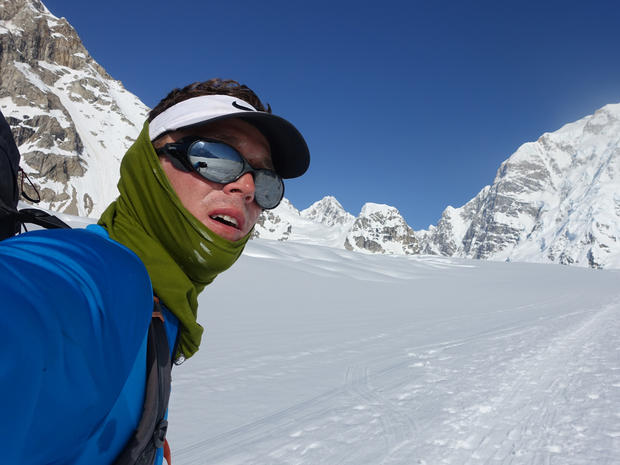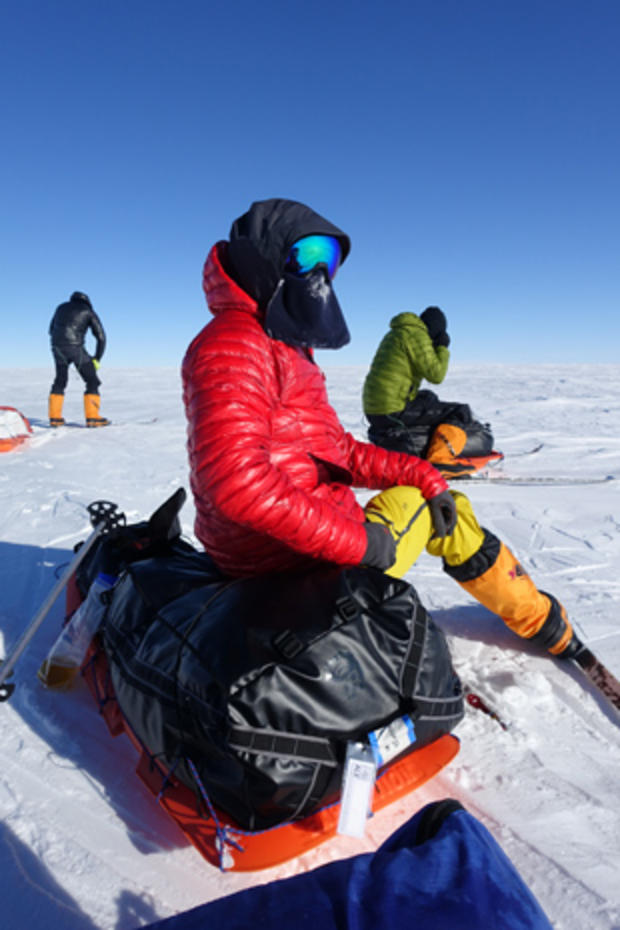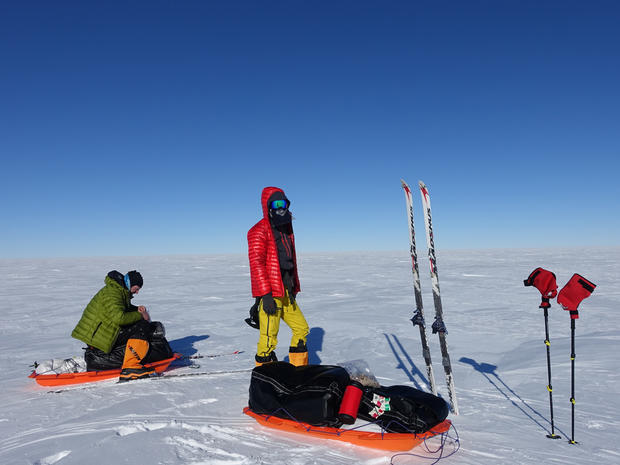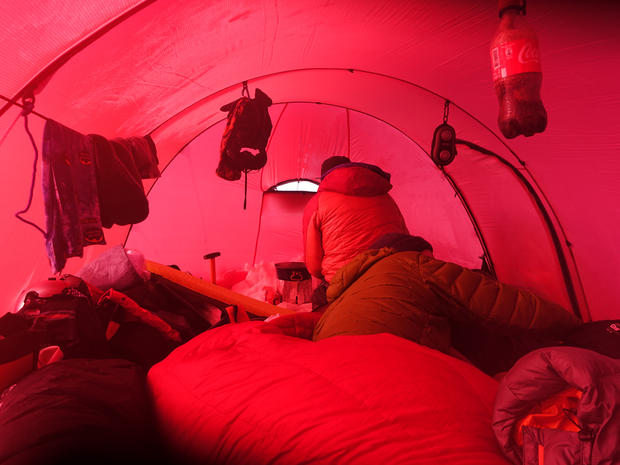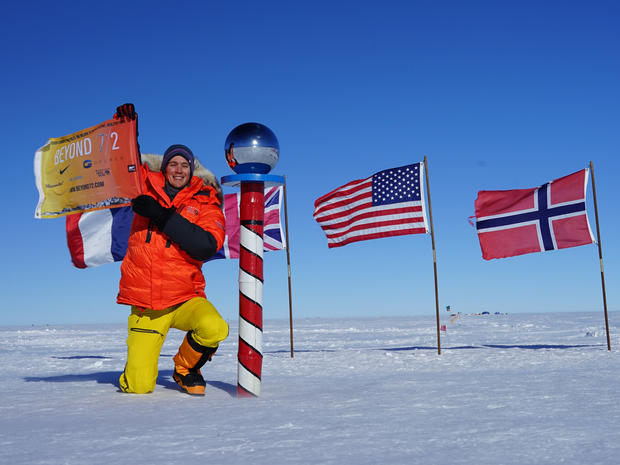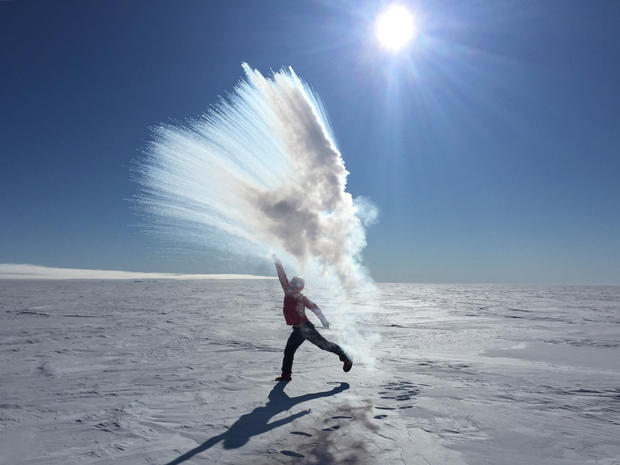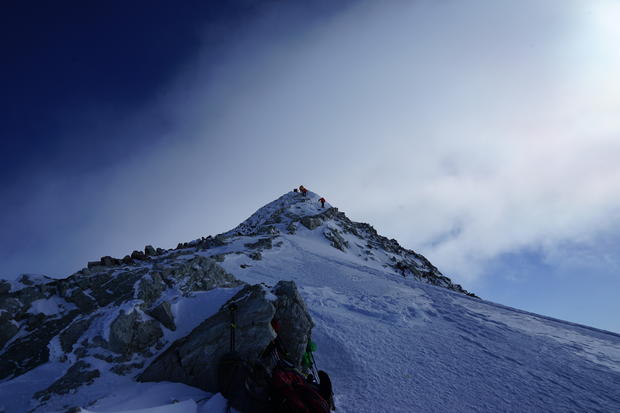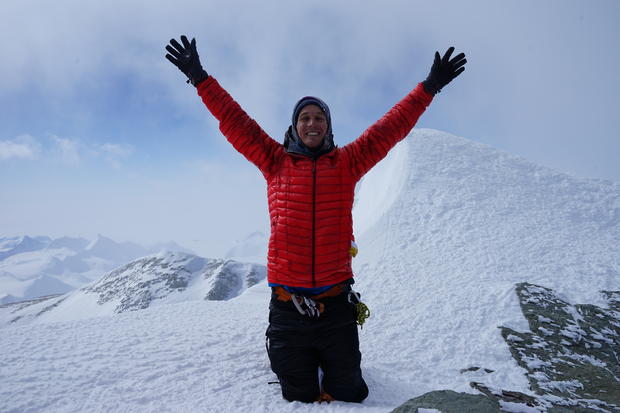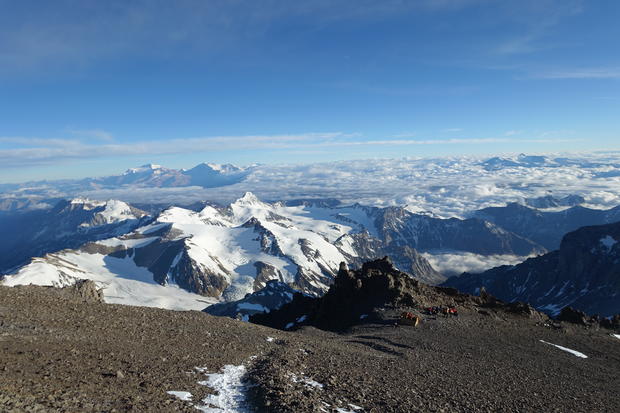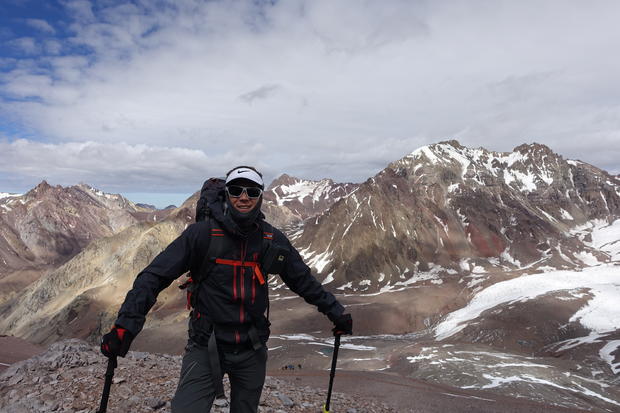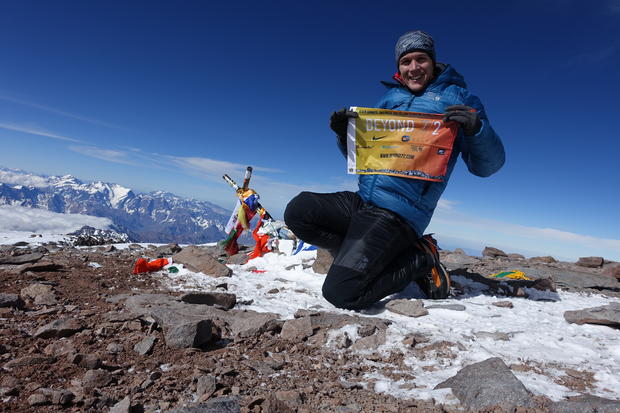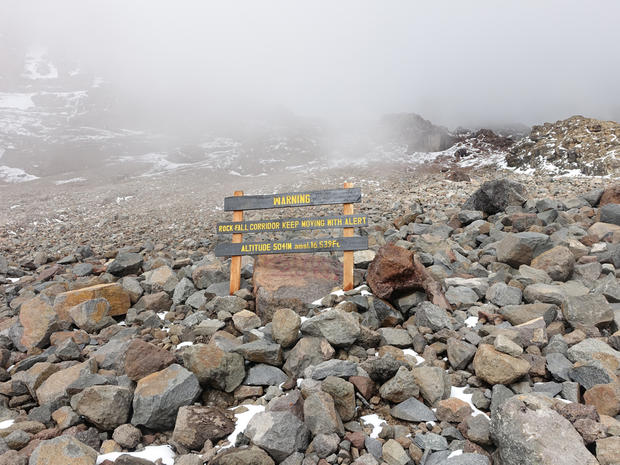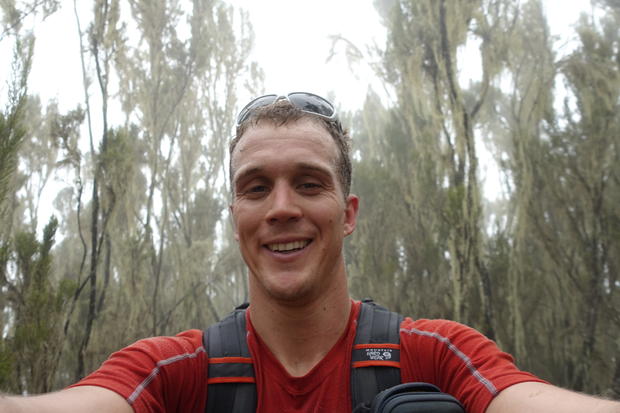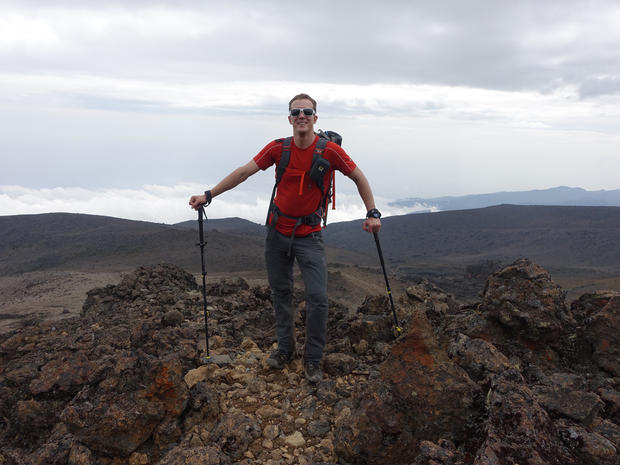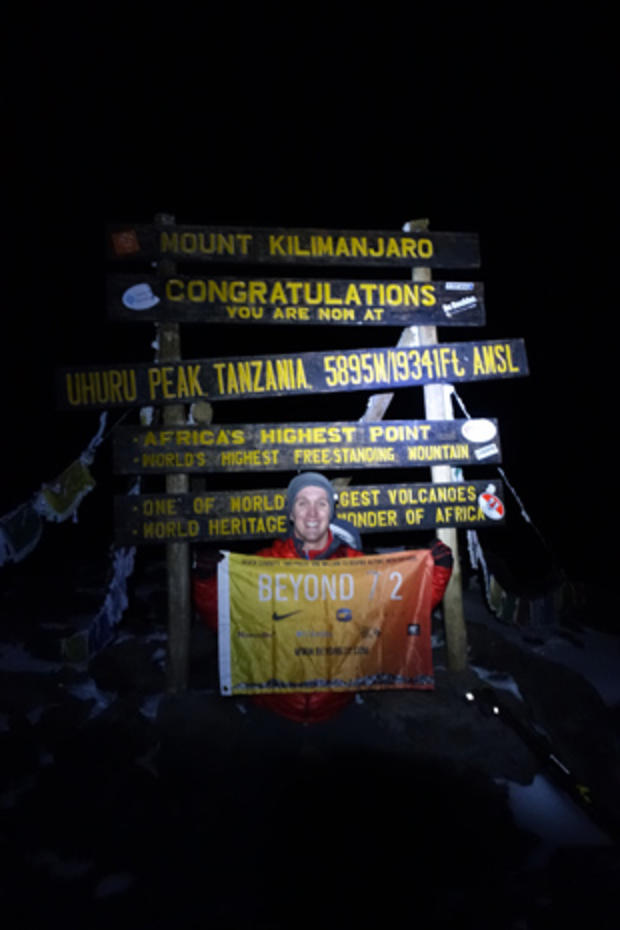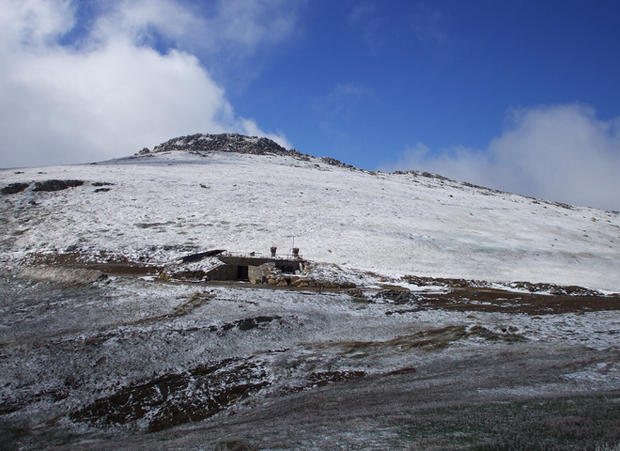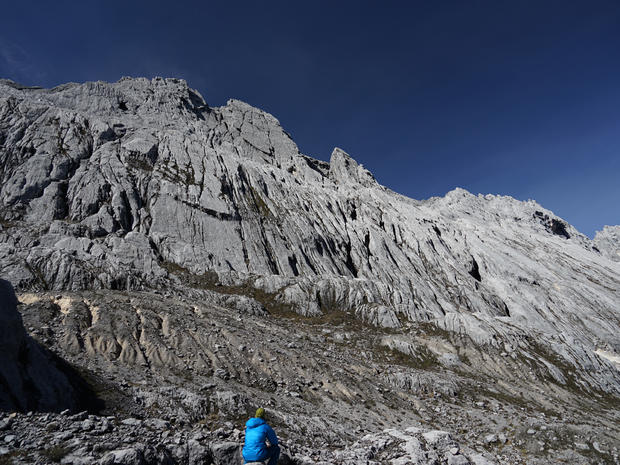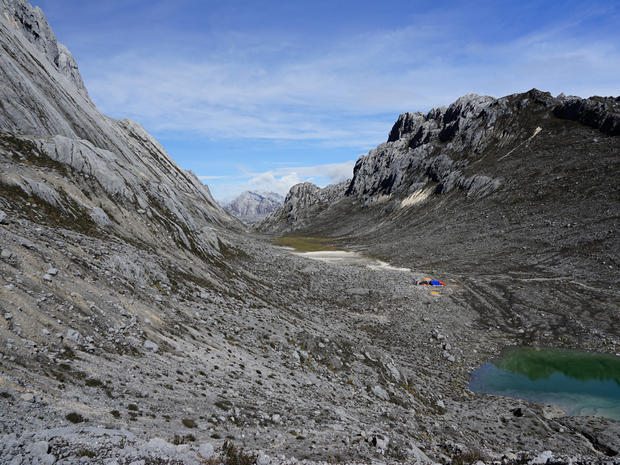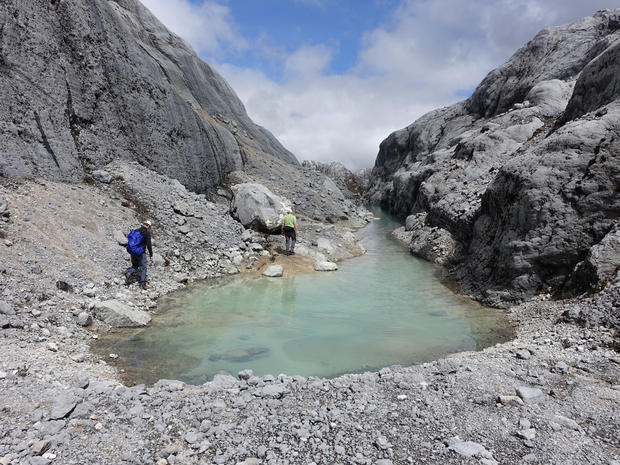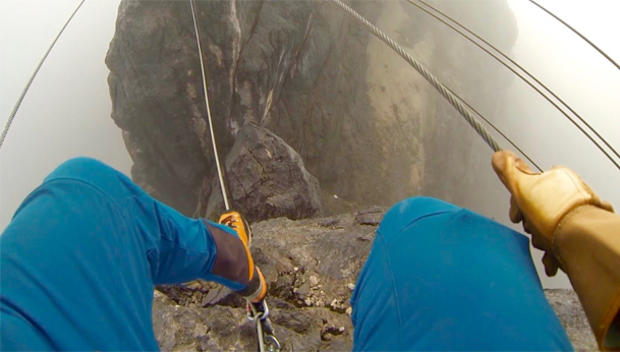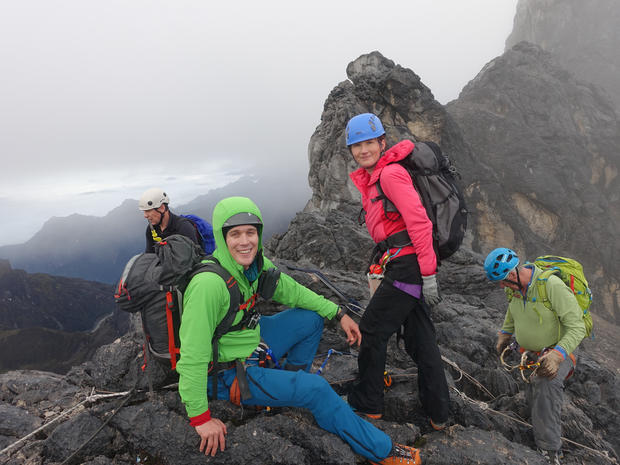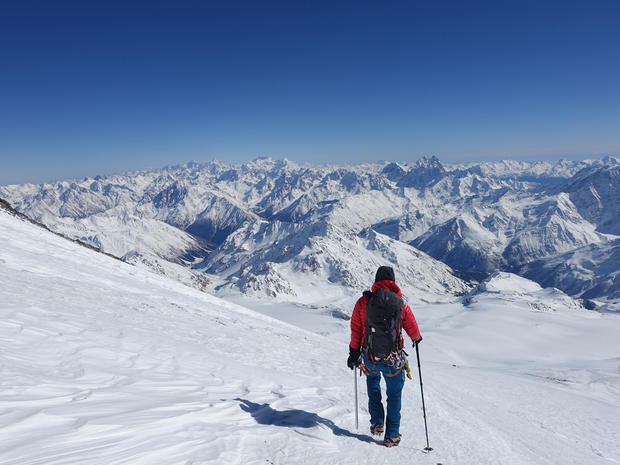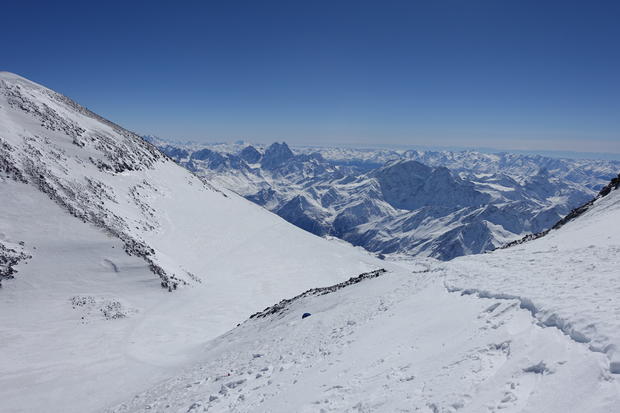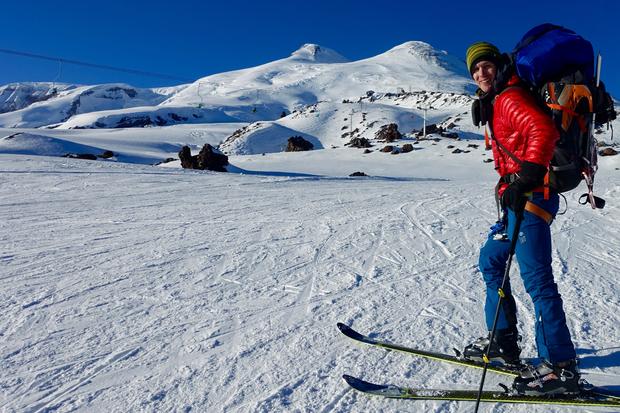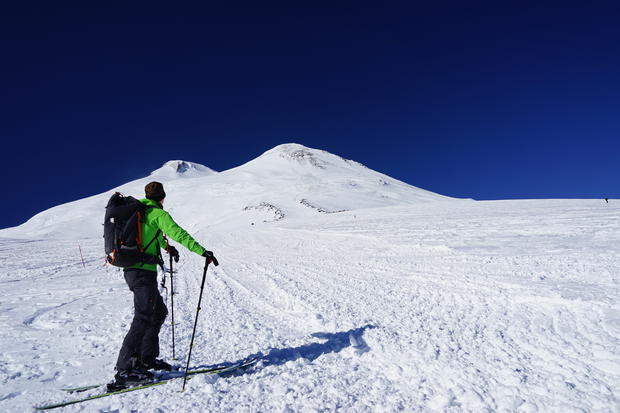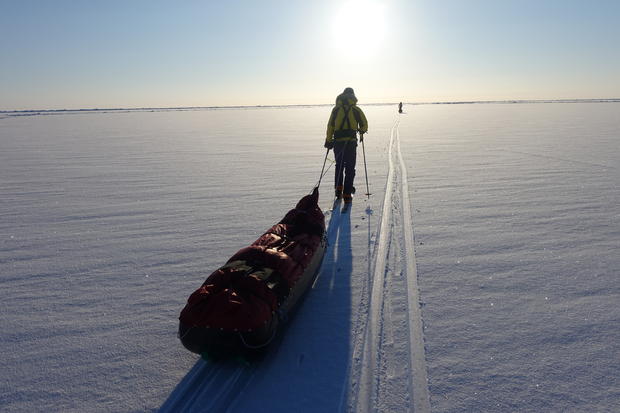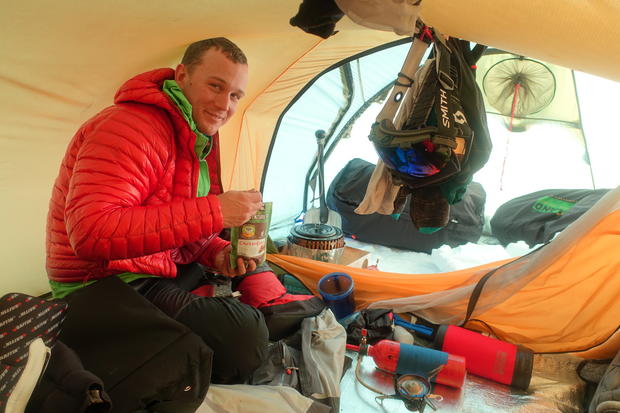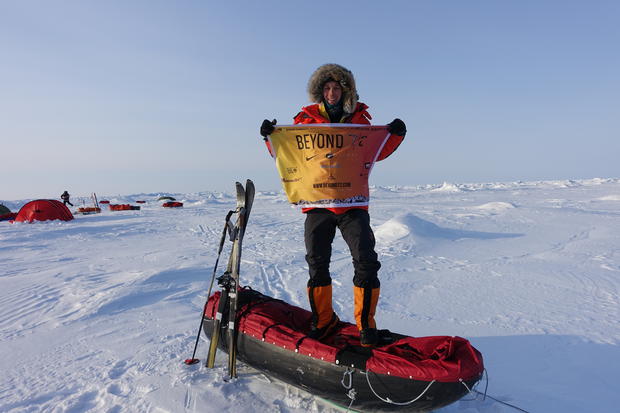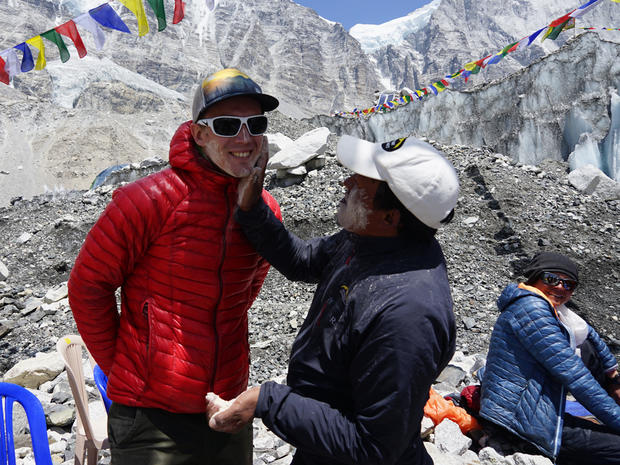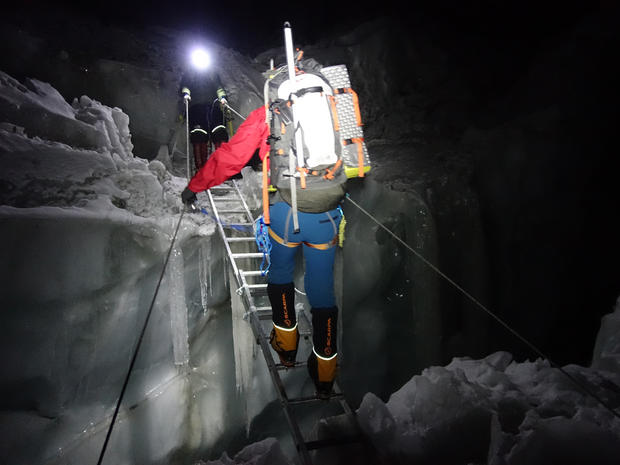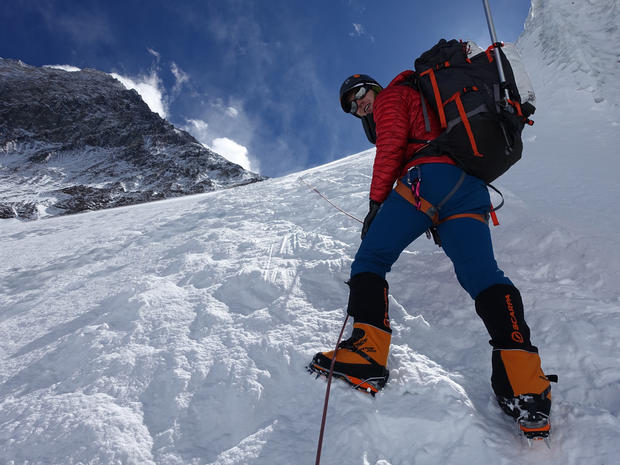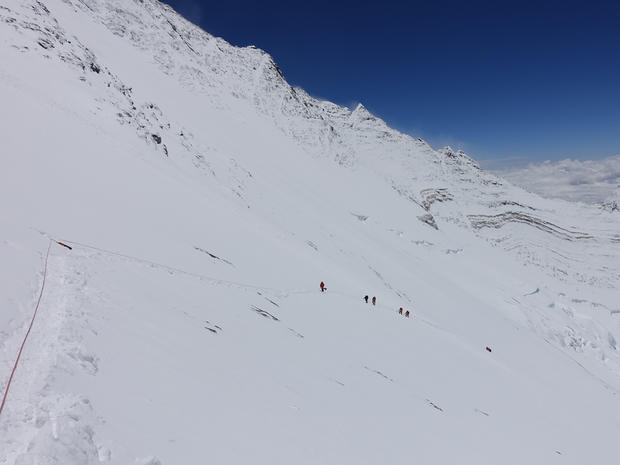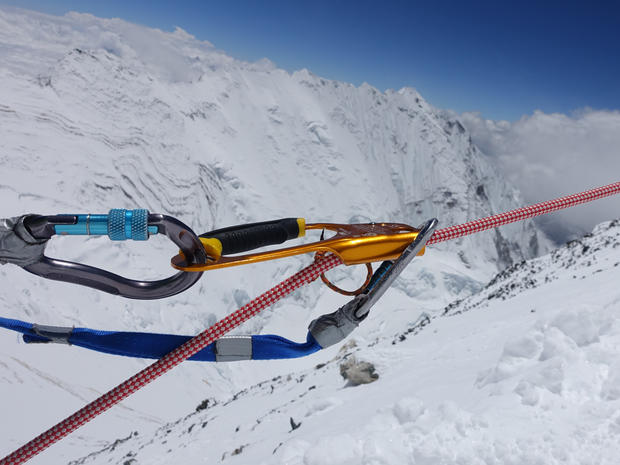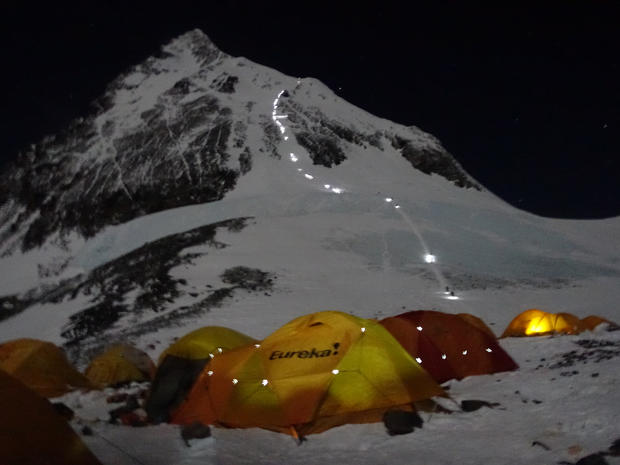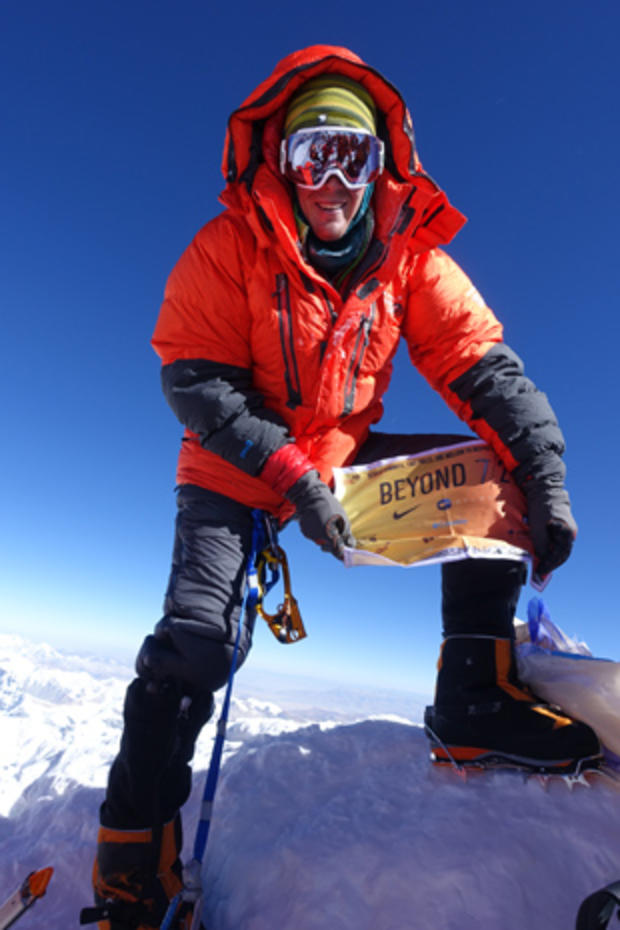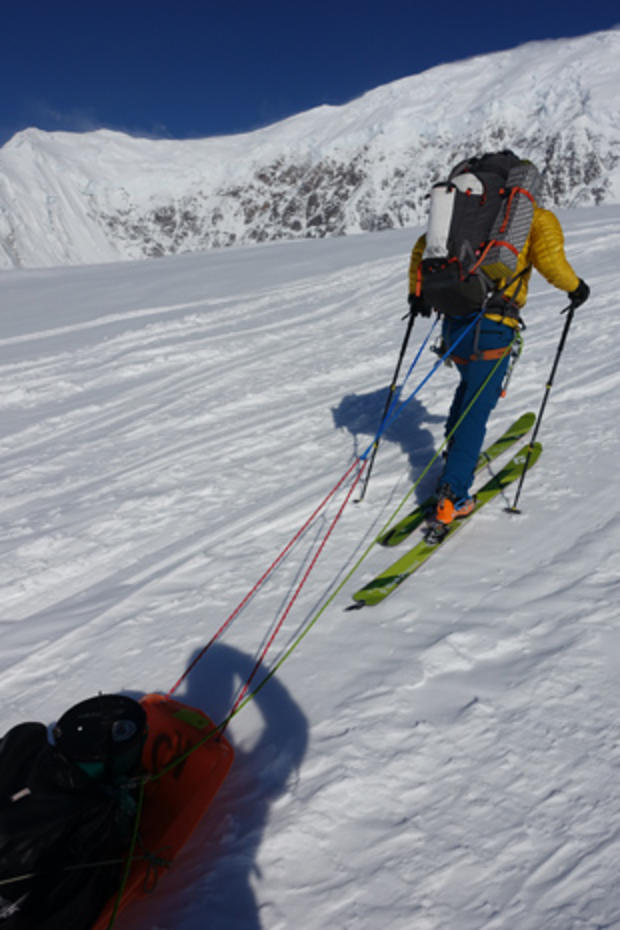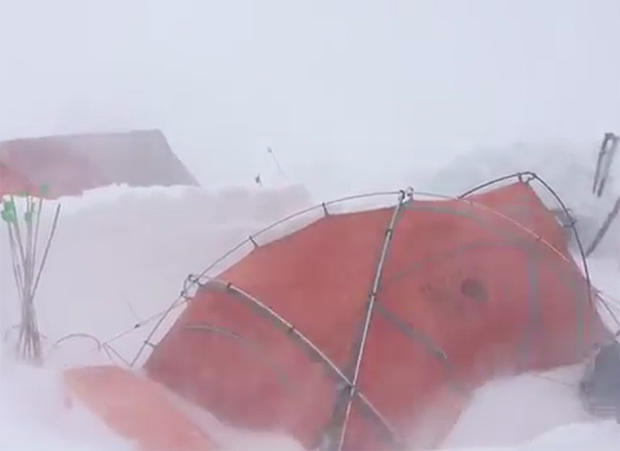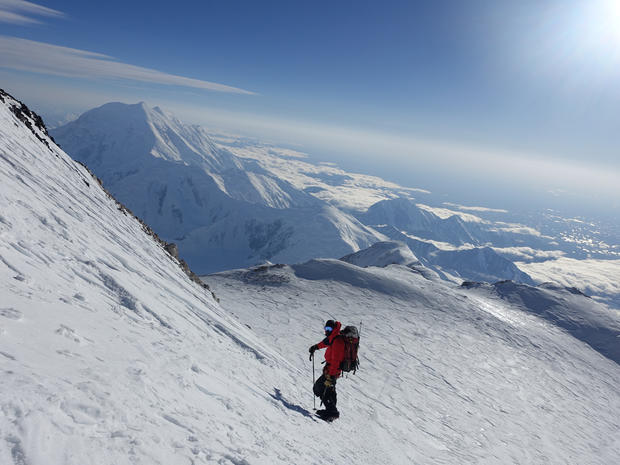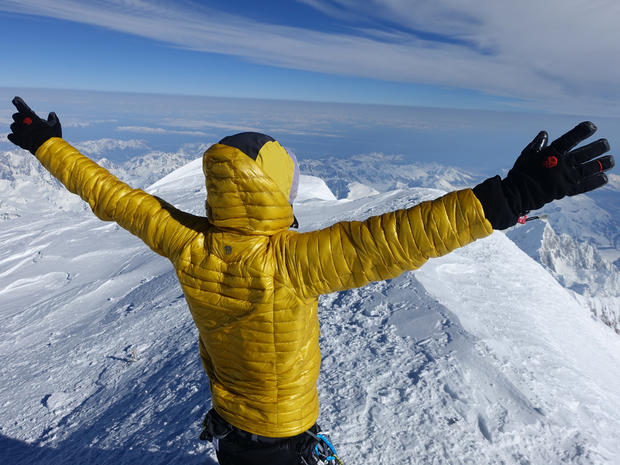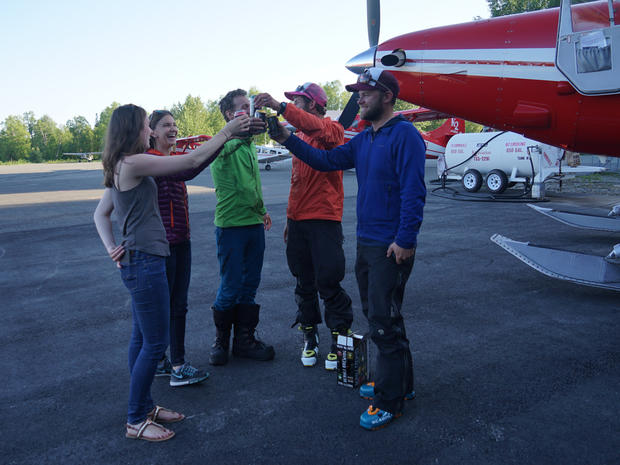Beyond 7/2: A record-breaking summit challenge
The Explorers Grand Slam is a grueling test of endurance for extreme adventurers, requiring not only reaching both the North and South Poles, but also the "Seven Summits" - the highest mountains on every continent.
Fewer than 50 people have ever finished the challenge. Only two have done it in under a year.
Colin O'Brady, who lives near Portland, Ore., accomplished the feat in just 139 days, a new world record.
Denali
Years ago an accident involving a flaming jump-rope caused severe burns on 25 percent of O'Brady's body. Doctors said he would likely never walk normally again. But O'Brady refused to listen. Nineteen months later, he entered the Chicago Triathlon and won it: "I was blown away! I couldn't believe it," he told CBS News' Lee Cowan.
South Pole
He became a professional triathlete, and for a while had his sights set on the Olympics, but eventually turned away from competitive sports. It came to a point, he said, where he thought, "This is amazing, but I wonder if there's a way in which I can use my athleticism for more than just my own personal success or failure on the race course."
In preparing for his Grand Slam attempt, O'Brady and his partner and fiancee Jenna Besaw partnered with the Alliance for a Healthier Generation, and began touring schools in Oregon and Washington, encouraging kids to lead more active, healthy lifestyles, and to follow him on his world record bid. "It was an opportunity to showcase the human spirit," he said. "The inspiration to live an active, healthy life, to eat well, to play hard, to explore the world, to explore your backyard, anything."
South Pole
On January 5, 2016, O'Brady was flown from Union Glacier to 89 degrees south for his first destination. Temperature: -13°F. He trekked about 10-12 miles a day in the thin air (though the South Pole plateau is just under 10,000 feet in elevation, it feels more like 12,000-13,0000 feet). "That's enough to get the heart pumping coming from sea level," he wrote.
South Pole
A view inside O'Brady's tent, where the hours are augmented with Led Zeppelin.
South Pole
Despite brutally cold winds of 15-20 mph, O'Brady made the final five-mile push to the South Pole on January 11, 2016. Having reached his first destination, the clock began ticking for O'Brady to complete his trip to the North Pole and the peaks of the Seven Summits in-between.
South Pole
A cup of boiling water thrown into -22°F Antarctic air produces an instant cloud of ice.
Vinson
Colin O'Brady's second stop on his Explorers Grand Slam was Mount Vinson, the tallest peak on the continent of Antarctica. With a delay on his plane trip back to Union Glacier (the DC-3 cargo plane's engine had frozen), he arrived at base camp on January 12.
Vinson
Bad weather almost blocked O'Brady's departure from Union Glacier base camp for several days, before a flying window opened and he took off for Vinson, located about 95 miles away.
Vinson
Vinson, at 16,050 feet, lies in the Sentinel Range of the Ellsworth Mountains, and was first climbed in 1966.
Vinson
O'Brady pulls his sled.
Vinson
O'Brady reached the summit of Vinson on January 17. The combination of fierce winds and brutal temperatures resulted in a windchill of -58°F. "We quickly celebrated at the top but didn't stay too long because the wind continued to pound us," O'Brady wrote.
Antarctica left its mark; two team members suffered frostbite, and another suffered superficial frostbite on two fingers, while O'Brady came close on his face.
Aconcagua
On January 22, 2016, O'Brady landed in Mendoza, Argentina, where the temperature was 100°F. "After life at -30°F, my body felt very confused with the abrupt change," he wrote.
His destination was Aconcagua, at 22,841 feet the tallest peak in South America (and the highest outside of Asia), where he would attempt a solo climb.
Aconcagua
Recent landslides had prompted many other climbers on the mountain to leave rather than attempt another summit, so O'Brady had Aconcagua nearly to himself except for the staff at base camp.
Aconcagua
On January 31, 2016, O'Brady reached the top of Aconcagua.
Kilimanjaro
Next stop: Kilimanjaro, a dormant volcano in Tanzania and, at 19,341 feet, the tallest peak in Africa.
Kilimanjaro
Colin O'Brady in Kilimanjaro's rain forest. From the entrance gate (5,200 feet) to the summit, (19,341 feet) he gained 14,100 feet in elevation.
Kilimanjaro
O'Brady's Kilimanjaro trek marked a return - he'd climbed the mountain two years earlier with his fiancee, Jenna.
Kilimanjaro
It might take a "normal" person six or seven days to climb Kilimanjaro. O'Brady made it in less than 12 hours, reaching the summit on February 9, 2016.
Kosciuszko
On his way to Carstensz Pyramid, on the Indonesian island of Papua, O'Brady stopped at Mount Kosciuszko, the tallest peak on mainland Australia, and one of the original Seven Summits (before the Australia/Oceania continent was expanded to include islands near Australia, including Polynesia and New Guinea). A relatively easier hike (reaching an elevation of 7,310 feet compared to the rocky summit of Carstensz, at 16,024 feet), Kosciuszko is called the "Eighth of the Seven Summits" by those who dispute its standing. By tackling each mountain, O'Brady wrote, "I will have both of my bases covered."
He reached the top of Kosciuszko on February 17, in a quick hike: two-and-one-quarter hours round trip, with 25 minutes on the summit.
Carstensz
Arriving in the wet climate of Papua, O'Brady's next target was the Carstensz Pyramid,
"Some climbers say that the wall of Carstensz Pyramid is as sharp as glass, and they are not far from the truth," O'Brady wrote. "Climbers who attempt this mountain are expected to have basic rock climbing skills, at a minimum."
Carstensz
The view at Carstensz.
Carstensz
Arriving by helicopter, O'Brady and his team acclimatized for a day at base camp before setting off.
Carstensz Pyramid
At the Carstensz Pyramid's summit ridge, the most challenging and exposed part of the route, O'Brady had to cross a 30-foot section rigged with wire and rope, with a drop-off of more than 1,000 feet. "Looking down at my feet walking on this tiny wire and what felt like endless drop below was enough to get the adrenaline pumping very hard," he said. "This climb is not for the faint of heart, especially if you are afraid of heights."
Carstensz
O'Brady and his fellow climbers reached the Carstensz Pyramid's summit on March 4, but would end up waiting several days at base camp for a return helicopter flight.
Elbrus
Next stop: Mount Elbrus (18,510 feet), part of the Caucasus Mountains in Southern Russia, near the Georgian border, and the tallest mountain in Europe.
Elbrus
Elbrus was the only one of the Seven Summits O'Brady was climbing out of season - it was winter in Russia - but a break in weather opened a promising window in March.
Elbrus
Colin O'Brady on skis tackling Mt. Elbrus, which typically is climbed by riding a gondola up from the ski resort at the mountain's base to 12,500 feet, where climbers stay in a hut before embarking for the summit at 18,510 feet.
The plan was to "skin up" (climb uphill with skis) as far as possible, before continuing to the summit on foot, and then ski down.
Elbrus
The average temperature during O'Brady's climb was -4°F with constant 20-30 mph winds, and a wind chill of -31°F when he reached the summit, on March 20, 2016 - ten days ahead of schedule. "But the sun was out and the storms stayed away, so it was well worth the rush to get here for this weather window!" he wrote.
Elbrus
A view of sunset from Mount Elbrus.
Gear
Gear required for O'Brady's trek to the North Pole. After an extended stay at Longyearbyen, Norway (the ice runway on which they would land had cracked, forcing the cancellation of flights), O'Brady and his team set off for Barneo, a temporary camp built by Russia on the sea ice.
North Pole
Heading to the North Pole.
North Pole
Unlike the South Pole, which is located on land, the North Pole is situated in the middle of the Arctic Ocean, and is covered in constantly-shifting sea ice.
North Pole
Crossing a large open lead (cracks in the ice floes exposing the water beneath).
North Pole
After long hours of pulling a sled carrying 150 lbs. of gear and supplies, O'Brady and his team set up tents. "Work doesn't end when we get into the tent," he wrote. "From the second we get in here, setting everything up and drying out all of our clothes. We've got the stove inside the tent to help heat the tent, but yeah, you gotta be really careful with that."
North Pole
O'Brady reached the North Pole on April 19, 2016.
After completing this part of the Explorers Grand Slam at sea level, O'Brady would have to travel to the opposite extreme, to the tallest peak on Earth: Mount Everest.
Everest
In late April Colin O'Brady arrived at the Khumbu Valley, continuing to the town of Lobache (above 16,000 feet) on way to Everest Base Camp.
Everest
Here, O'Brady receives a "blessing" prior to his ascent.
Everest
Mount Everest Camp 1. At 29,029 feet, Everest is the tallest mountain on Earth, and the Asian component of the Seven Summits.
Everest
Crossing a crevasse on Everest.
Everest
Climbing the Lhotse Face, between Camp 2 and Camp 3. In the upper left is the summit ridge of Everest.
"The first hour or so is up a winding snow slope with many wide open crevasses that you have to jump across," O'Brady wrote. "Normally, a section like this with only a moderate incline would be fairly easy for me; however, on a cold morning above 21,000 feet I found it very challenging. I was staring at the 50 degree (seemingly vertical) Lhotse Face wondering how I was going to manage to get up when a gentle slope was proving a difficult feat to conquer. ... Surprisingly, the near-vertical climbing seemed to challenge me less than the approach."
Everest
Traffic on the Lhotse Face, between Camps 3 and 4.
Everest
The ascent from Camp 3 to Camp 4, which lies in the "Death Zone" (above 26,000 feet).
Everest
A lifeline at Everest. Nearly 280 people have died in their attempts to conquer the mountain.
Everest
Camp 4 at night.
Everest
After strong winds subsided, O'Brady continued his summit push, reaching the top of Everest on May 19, 2016.
Denali
O'Brady's final test for the Explorers Grand Slam was Denali in Alaska. At 20,310 feet, the mountain formerly known as Mt. McKinley is the highest in North America, and has the greatest "base to peak" rise (18,000 feet) of any mountain on Earth.
Denali
Just four days after summitting Everest, O'Brady was on the Denali glacier.
In climbing the West Buttress route (considered the safest on the mountain), O'Brady's team was joined by nearly 400 climbers on the mountain, as May 26 fell within the main climbing season. In addition to National Park Rangers nearby, there is even cell phone service above 14,000 feet.
Denali
Unlike expeditions in the Himalayas which are aided by Sherpas, climbers on Denali must be completely self-sufficient. Weather is unpredictable; snowstorms can last up to a week.
Denali
After hiking to a camp at 14,200 feet, O'Brady hunkered down for a few days waiting for weather to clear. "My body is so thrown around right now I have no idea what time zone I'm on," he wrote. "The last two nights, despite the snowstorms that have almost buried my tent, I slept 14 hours oblivious to what was going on outside. I'd say that is only possible given the level of fatigue I'm feeling."
Denali
On the slopes of Denali.
Denali
Upon reaching the top of Denali on May 27, 2016 at 6:00 p.m. local time, Colin O'Brady broke the Explorers Grand Slam world record in 139 days. (The previous record was 192 days.)
Denali
O'Brady had just enough energy left to call his fiancee, Jenna Besaw. She boarded a plane and flew straight to the glacier to meet him, and to celebrate a little extra surprise: It turns out O'Brady had not only broken the Grand Slam record, but he also broke the Seven Summits speed record in the process.
"I hope that people take away from this the power of the human spirit," he told Lee Cowan. "When you believe in yourself, and you dream big, anything is possible."
For more info:
Alliance for a Healthier Generation
By CBSNews.com senior producer David Morgan
